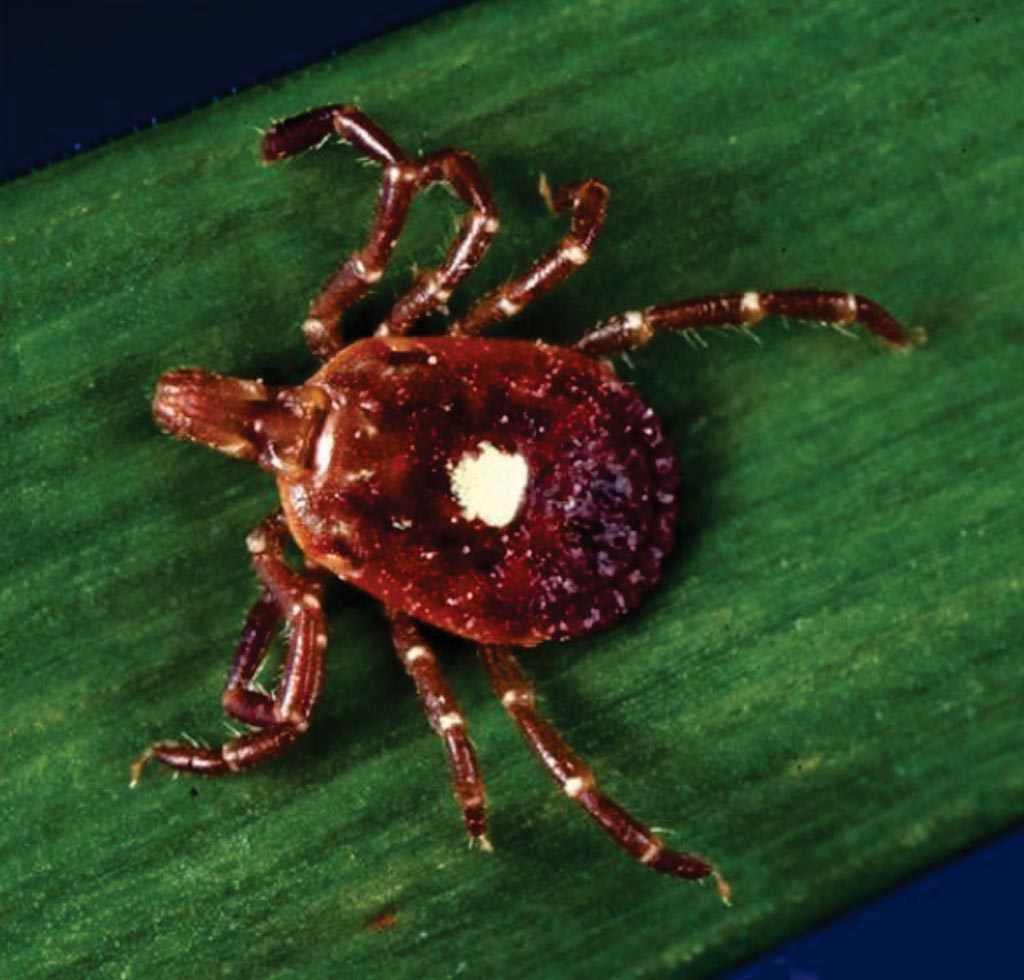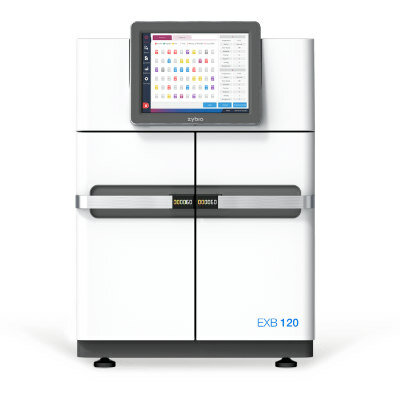Test Differentiates Lyme Disease from Similar Condition
By LabMedica International staff writers
Posted on 29 Aug 2017
Lyme disease is the most commonly reported vector-borne illness in the USA, and current laboratory tests are not sensitive enough to detect infection with high accuracy in the first few weeks of illness. In 2015, 95% of confirmed Lyme disease cases were reported from 14 US states.Posted on 29 Aug 2017
Southern Tick-Associated Rash Illness (STARI) which is characterized by a rash indistinguishable from that of Lyme disease and by possible fatigue, fever, headache, and muscle pains. The current laboratory test used for Lyme disease also cannot diagnose STARI, for which the cause is unknown.

Image: A Lone star tick (Amblyomma americanum) that can be carriers of southern tick-associated rash illness (Photo courtesy of Centers for Disease Control and Prevention).
Lyme disease is transmitted when blacklegged ticks infected with the bacterium Borrelia burgdorferi bite people, while Lone star ticks, which cause STARI, do not transmit B. burgdorferi. Scientists at Colorado State University (Fort Collins, CO; USA) and their colleagues applied an unbiased metabolomics approach with sera retrospectively obtained from well-characterized patients; they defined biochemical and diagnostic differences between early Lyme disease and STARI.
The investigators used mass spectrometry to identify biomarkers of metabolic differences in the two diseases. Specifically, the team found a metabolic biosignature consisting of 261 molecular features (MFs) that revealed altered N-acyl ethanolamine and primary fatty acid amide metabolism discriminated early Lyme disease from STARI. Development of classification models with the 261-MF biosignature and testing against validation samples differentiated early Lyme disease from STARI with an accuracy of 85% to 98%.
John T. Belisle, PhD, a professor and lead investigator of the study, said, “We were able to tell the difference between early Lyme disease and Southern Tick-Associated Rash Illness by using biomarkers that show us how the body reacts to these illnesses. This could be important in helping to more accurately detect early Lyme disease, which is crucial because the longer people wait for Lyme disease treatment, the higher the potential risk for having more severe symptoms.” The study was published on August 16, 2017, in the journal Science Translational Medicine.
Related Links:
Colorado State University













